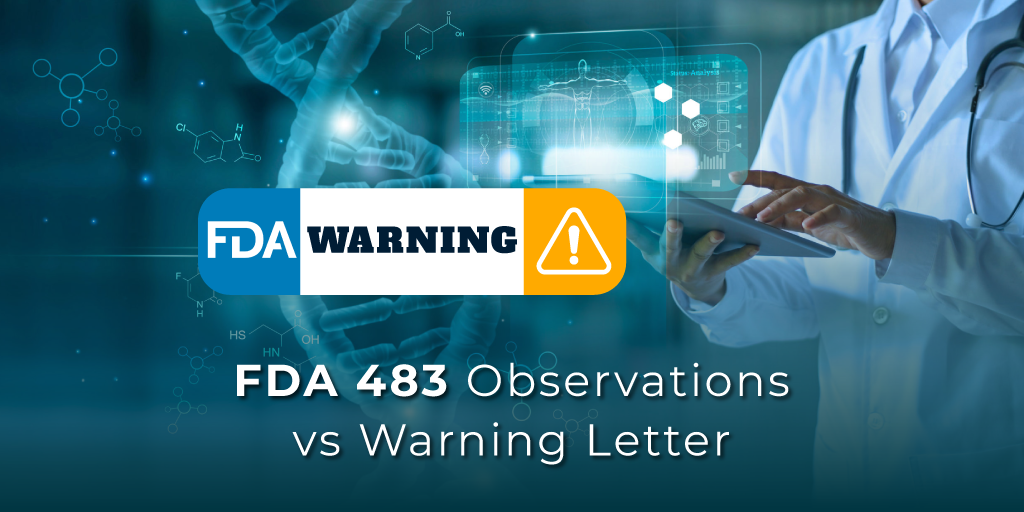FDA 483 Observations vs. Warning Letter

Article Context:
Companies in the life sciences, food, and cosmetics industries are all too aware of how fickle the market is, how dynamic their studies and those under investigation are, as well as their timelines for releasing a specific medical device or medication. Adding to that, how your quality processes are going, or not going, and you have a recipe for FDA 483 observations or worse, FDA Warning letters 2021.
How do companies get to this point? What are the differences? How does a company avoid them?
I’ve worked with life-science-related companies for eight years now. When I first started in this vertical, I had no idea what these terms meant or their impact. I quickly learned that the FDA published an email indicating which companies had been cited, including names of the executives, location, and details about their citing. This is terrible news, especially for their patients/customers and employees! Think of the ramifications! You do NOT want to be on either of these FDA lists!
FDA 483 Observations (vs) Warning Letter
The difference between a 483 FDA observation and a Warning Letter is as follows….
483 Observation – A notice that indicates potential regulatory problems. The first inspection team issues this.
Warning Letters – An escalation of the previous FDA audit 483 observations. It’s issued from a higher level of an FDA official.
Based on the FDA’s website:
“Make sure everything is written down: all procedures, activities, protocols, etc. Avoid a paper-based system as this is hard to track. Simplify SOPs and maintain and update them regularly. Ensure staff are well trained on company procedures and have a sound understanding of manufacturing practices like GMP.”
The FDA has even More details here as well…
https://www.fda.gov/inspections-compliance-enforcement-and-criminal-investigations/inspection-references/fda-form-483-frequently-asked-questions
In my early years of life sciences, I would call and get calls from individuals at companies. Fortunately, we had consultants (and currently do now) who knew how to remediate these scenarios with efficiencies. This would allow the company to get back on track and stay “above board” when meeting compliance.
The simplistic approach is always to have someone monitoring the regulations and compliance expectations and make sure everyone else knows about them. Keeping a Quality manual up to date and making certain employees are trained against them (marketing and sales too) is preventative medicine.
I remember when an Ebola case had broken out again, around 2014. There was a “sales rep” of an essential oil company who had posted on their blog and was telling people verbally that one of their oils “prevented Ebola.” Uh oh! Someone in the FDA caught wind of the blog. Suddenly, the company was given an FDA 483 form. Thanks to One person, it took a good six months or more to iron all of that out.
In a nutshell (inspected by the FDA, of course 😊), set up procedures with documentation that can be easily accessible to everyone, and trained and retrained against regularly. You also need a resident expert or two on staff or on call to keep everyone informed of new changes. For the sake of your patients, customers, and employees, you need to stay ahead of the game and avoid FDA 483s and Warning Letters.
Connect with Compliance Group today at sales@complianceg.com.
